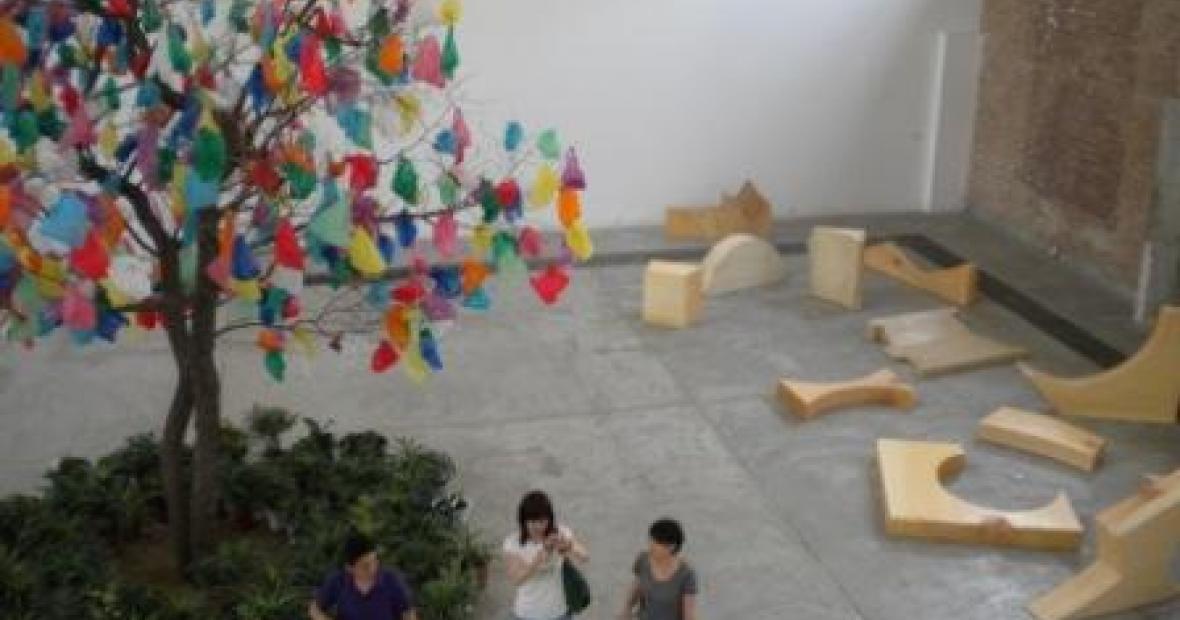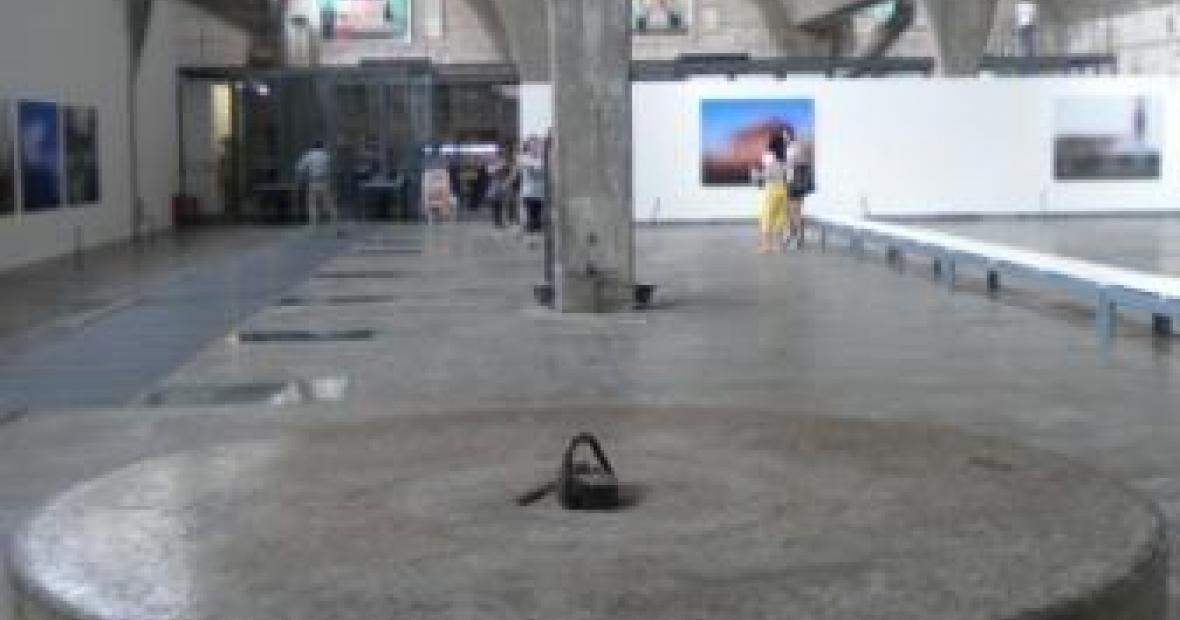798 Art District in Beijing
An exploration of contemporary art in the capitol
Anyone who saw the Olympics may have gotten a sense of the sophistication of Beijing. Whatever TV can show, it’s nothing compared to the lived experience in China’s capitol city. From its wide boulevards, to trendy shopping areas seemingly without end, to skyscrapers that appear to spring up overnight, Beijing is a city relentlessly on the move. Compared to Nanjing, everything is bigger, wider, fancier, though Nanjing has the edge in pedestrian, bike and motor scooter traffic. Beijing is a car, bus and metro culture.
From its beginnings almost a 1000 years ago in the Yuan dynasty (the line of emperors starting with Ghengis Khan), Beijing has been a planned city. The temples and palace are on a clear north/south axis and everything radiates from the palace (aka Forbidden City), Tian An Men and the vast square that spreads south from that gate. As such, Beijing is easy to navigate and lends itself to modern transportation systems. A series of ring roads carry traffic around the city. The second and third rings are the oldest and most congested. Now the 4th and 5th rings spread the city into the suburbs. Down below, the first two lines of the Metro system were joined, for the Olympics, by 5 more lines, linking the city with clean, efficient subways. When China wants to accomplish something, they are determined and successful. Now if they could just figure out how to get consistently clean drinking water across the country…
Beijing is also the leading city in China for contemporary art. Instead of building a gallery zone from scratch and tearing out what was already there, the art world instead took a page from the Soho/Chelsea model and went in search of existing raw space for a gallery zone. They found it near the 3rd ring road, in a decaying area of 50s era factories and warehouses. These spaces offer large uninterrupted rooms and high ceilings that can be cleaned up and used as is or modified into slick galleries. So on our first day in Beijing we set off to visit the 798 Art District. A second area, Caochangdi, a little further on, is the latest cutting edge art zone in Beijing, but we couldn’t do both in a day. Like everything else in Beijing, they are enormous.
Like Soho and Chelsea, 798 started with a few blocks and continues to expand. There is a wide mix of types of galleries, necessary to attract a diverse clientele with varying budgets for buying art. There are a few spaces called “museums,” and a few of them offer exhibitions that set the bar very high with curated shows and international artists. The best of these is the Ullens Center for Contemporary Art www.ucca.org.cn. The layout of 798 is on a grid, and the atmosphere is relaxed. Most of the streets are for pedestrians, with the occasional car or delivery van moving carefully through the throng. Gift boutiques and quirky craft stores hug the margins, there is a major street that features restaurants, mostly overpriced, and snack and drink vendors are scattered throughout. About halfway through our day, we finally found a map (would that they were ubiquitous), and discovered that some of the best spaces are down “streets” that are actually arcades or alleys located behind the main roads. The map helped focus our looking.
A visit to any gallery district or art fair provides a snapshot of the art world in a particular place, at a particular time. After a day of looking, here is what we took away from our day in June in the 798 Art District.
Paintings predominated, which bucks the recent trend towards photography and video. In fact we saw relatively little video overall. We also saw some intriguing sculpture (and a lot that was pretty derivative), and a few fine photography galleries. In the paintings, there were an awful lot of large eyed, big headed figures. I read somewhere that there had recently been a Japanese “anime” festival at 798 and these may have been the remnants. Still, we grew weary of being ogled by google-eyed bubble heads. Are people buying these? We also saw a good deal of distortion, fantasy and dream world creatures in painting and sculpture: super inflated bodies, attenuated forms, and hybrid animal-vegetable-mechanical creatures. Don proposed that we were witnessing a 21-century return to Surrealism and his observation provided fodder for much discussion as the day wore on. Finally, we noted a steady state undertone of Jeff Koons’ inspired kitschy mechanical reproduction. Sigh.
We started our day with an entertaining and eclectic show called Input/Output at Red Star Gallery. The quality was mixed, though some pieces were quite good. After passing through several areas, it finally dawned on us that we were seeing an MFA exhibition from the Beijing Institute of Fine Arts. Once it all made sense we could relax and enjoy the show. The industrial design, jewelry and architecture were top notch. We saw two excellent photography galleries. 798 Photo Gallery was installing their main space, but they had portfolios of work by their artists to peruse. MR Gallery had an excellent show, “Reversal,” by Chinese artist Cheng Yuyang. His black and white montages are done with large format contact prints from negatives (so the blacks and whites reverse into a ghostly presence, and the sky is always black). He photographs panoramic sites in Beijing, but they come across as mysterious and sinister when reversed.
We saw a show of consistently strong work by South Korean artists at Artside Gallery, a space specializing in work from Korea . Galeria Continua, a gallery based in Italy, had the best exhibition we saw. Entitled “Rem(a)inders,” it featured works by 8 artists and artist teams, all of whom made work out of or about the leavings of consumer society. There were pieces made of plastic bags, bits of bicycles, smashed crockery, carpenters’ leavings, and old shoes. One lovely set of paintings featured the remains of Chinese dinners, and a video piece eerily tailed a police car down darkened empty streets. The show opened with a piece by Michelangelo Pistoletto of a large Buddha sitting atop a mound of cast-off clothing and electronics. On what do we hope to base our enlightenment?
Though we are masters of speed viewing and will walk right back out of a gallery that doesn’t interest us, we still didn’t see it all. We’ll just have to visit again — and check out Caochangdi — the next time we are in Beijing.


